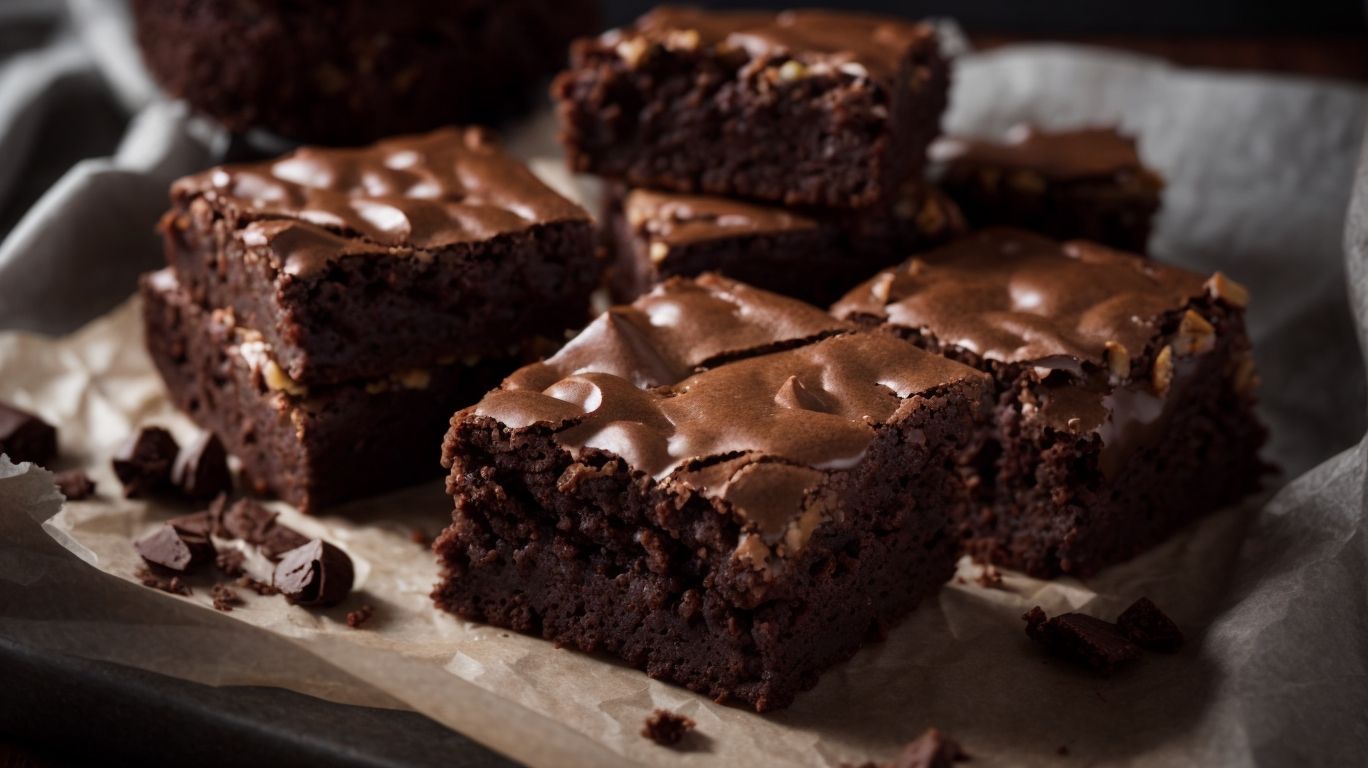How to Bake Brownies Without Eggs?
Curious about how to bake brownies without eggs? Whether it’s due to allergies, dietary restrictions, or simply a shortage of eggs, there are plenty of alternatives to achieve the same delicious results.
We will explore the role eggs play in baking, why you might want to bake brownies without eggs, and the different substitutes you can use.
Stay tuned for tips on how to make the perfect eggless brownies and a mouth-watering recipe to try at home. Let’s get baking!
Key Takeaways:
What Are Eggs Used For in Baking?
Eggs play a crucial role in baking, contributing to the structure, texture, and flavor of various baked goods.
When eggs are mixed into the batter or dough, they act as a binding agent, holding the ingredients together. The proteins in eggs coagulate when exposed to heat, giving baked goods their structure and stability. In terms of texture, eggs can make baked goods moist, tender, and airy due to their ability to retain moisture. Eggs add richness and depth of flavor, enhancing the overall taste of the final product. Different types of baked goods, such as cakes, cookies, and quiches, heavily rely on eggs for their unique properties.
What Role Do Eggs Play in Brownies?
Eggs in brownies serve to bind the ingredients together, add moisture, and create a tender texture in the final product.
When eggs are mixed with the dry and wet ingredients in a brownie batter, they act as a binding agent, helping to hold everything together during baking. This binding property is crucial for the structural integrity of the brownies, preventing them from falling apart.
Eggs contribute significantly to the moisture content of brownies. They trap steam during baking, resulting in a moist and fudgy texture that is a hallmark of a perfect brownie. The fat and protein in the eggs also play a role in enhancing the richness and flavor profile of the brownies.
The number of eggs used in a brownie recipe can impact its final texture. For instance, adding an extra egg can make the brownies more cake-like, with a lighter and airier crumb, while reducing the number of eggs can lead to denser and fudgier brownies. It’s all about finding the right balance to achieve the desired consistency.
Why Bake Brownies Without Eggs?
There are several reasons why one might choose to bake brownies without eggs, including catering to dietary restrictions, vegan lifestyles, or egg shortages.
Baking brownies without eggs can be a creative challenge that leads to delicious results. By omitting eggs, a key binding agent, alternative ingredients like applesauce, mashed bananas, flaxseed meal, or yogurt can be used to maintain structure and moisture. These substitutions not only cater to those with egg allergies but also create brownies that are suited for vegan diets, aligning with ethical considerations. Despite the absence of eggs, eggless brownies can still turn out moist and fudgy, albeit slightly denser due to the lack of aeration from eggs.
Allergies or Dietary Restrictions
Baking eggless brownies can be a suitable solution for individuals with egg allergies or dietary restrictions that limit egg consumption.
When baking brownies without eggs, there are several alternative ingredients that can be used to achieve a similar texture and flavor. One common substitute for eggs in brownie recipes is applesauce, which helps to keep the brownies moist while also adding a hint of sweetness.
Another option is to use mashed bananas as a replacement for eggs. Bananas not only provide moisture to the brownies but also contribute a subtle fruity flavor that complements the richness of the chocolate.
For a more decadent twist, you can try incorporating silken tofu into your eggless brownie recipe. Silken tofu creates a creamy texture and helps bind the ingredients together, resulting in a fudgy and satisfying treat.
Vegan Lifestyle
For vegans following a plant-based lifestyle, eggless brownie recipes provide a delicious dessert option without compromising dietary preferences.
Eggless brownies are specifically crafted using clever alternatives to traditional eggs, such as flaxseed meal or applesauce, which act as binding agents while maintaining the rich, fudgy texture that brownie lovers crave. These ingredients not only replace eggs but also keep the recipe dairy-free, aligning perfectly with vegan dietary principles. By incorporating high-quality cocoa powder and vegan-friendly chocolate, these brownies exude a decadent chocolate flavor that rivals any traditional recipe.
Shortage of Eggs
In situations where eggs are scarce or unavailable, baking eggless brownies offers a practical solution to continue enjoying homemade treats.
Not only does opting for eggless baking provide a simple workaround, but it can also lead to surprisingly delicious results. By using ingredients like ripe bananas, applesauce, or yogurt as egg substitutes, you can achieve the same moist and fudgy texture in your brownies.
- Experimenting with different alternatives such as flaxseed meal mixed with water, silken tofu, or even carbonated water can yield unique variations in taste and texture. These options not only cater to those with dietary restrictions but also present an exciting opportunity to discover new flavors.
What Are the Alternatives to Eggs in Brownies?
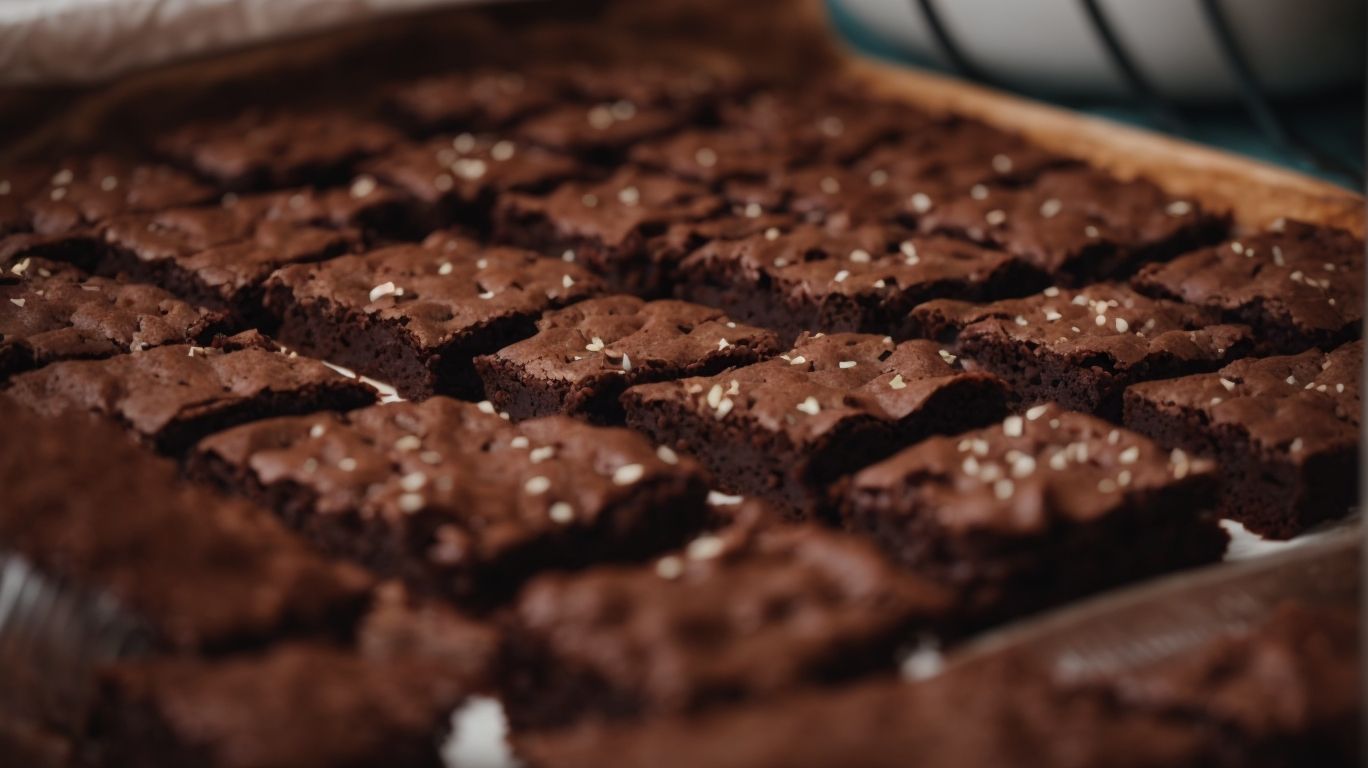
Credits: Poormet.Com – William Smith
There are various substitutes for eggs in brownies that can help achieve the desired texture, whether fudgy or cakey, without compromising on flavor.
For individuals looking to make fudgy brownies, avocado can be a great egg replacement. Its rich, creamy texture adds moisture and density, resulting in a decadent treat.
If you prefer a lighter, cake-like texture, consider using Greek yogurt. Its tangy flavor and protein content contribute to a soft and airy crumb.
Applesauce is another versatile option that can be used for both fudgy and cakey brownies, providing moisture and a subtle sweetness.
Experimenting with these alternatives allows you to tailor your brownies to your preferred consistency and flavor profile.
Flaxseed or Chia Seeds
Using ground flaxseed or chia seeds soaked in water can mimic the binding properties of eggs in brownie recipes while adding a nutritional boost.
When substituting eggs with flaxseed or chia seeds, the general rule is to mix 1 tablespoon of ground flaxseed or chia seeds with 3 tablespoons of water to replace one egg in a recipe. Ensure that the mixture sits for about 5-10 minutes to thicken before adding it to your brownie batter.
The soaked flaxseed or chia seeds form a gel-like consistency that helps bind the ingredients together, resulting in a moist and fudgy texture in your brownies. These seeds are packed with omega-3 fatty acids, fiber, and antioxidants, giving your dessert a nutritious twist.
Applesauce or Mashed Banana
Incorporating applesauce or mashed bananas in brownie batter can add moisture and natural sweetness, acting as egg replacements in recipes.
When using applesauce as a substitute for eggs, approximately 1/4 cup can be used for every egg in the recipe. This not only adds moisture, but also imparts a subtle fruity flavor to the brownies.
On the other hand, mashed bananas can be used in a 1:1 ratio with eggs, providing a richer sweetness and denser texture to the baked goods. Experimenting with the quantities of these egg alternatives can help to achieve the desired level of sweetness and moistness in your brownies.
Yogurt or Buttermilk
Yogurt or buttermilk can serve as creamy substitutes for eggs in brownie recipes, enhancing moisture and richness in the final product.
When using yogurt or buttermilk in place of eggs, their tanginess complements the sweet chocolate flavor of the brownies, creating a delightful balance of tastes. The moisture content they add helps in achieving a fudgy texture, making the brownies softer and more succulent. The lactic acid present in yogurt or buttermilk reacts with other ingredients during baking to promote a tender crumb structure. This reaction aids in developing a moist and tender brownie that is not overly dense.
How to Substitute Eggs in Brownie Recipes?
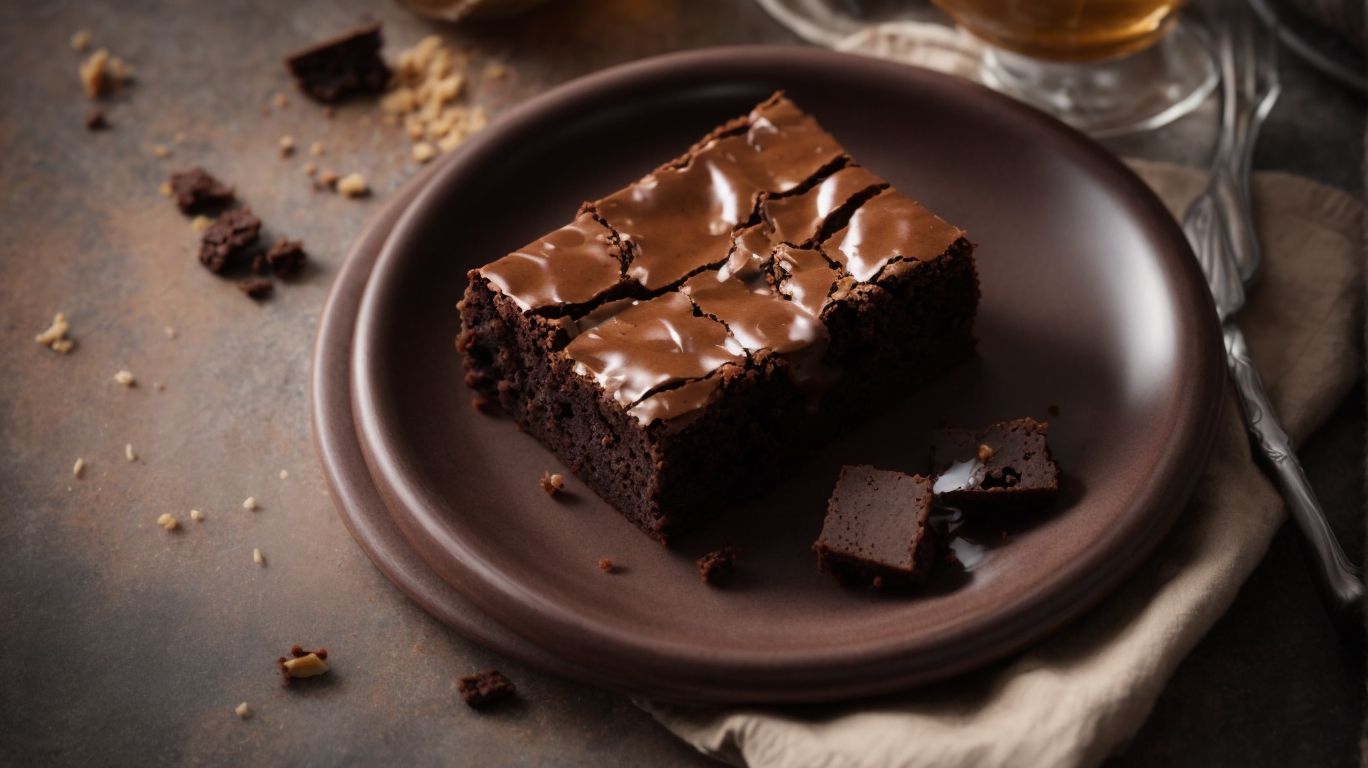
Credits: Poormet.Com – Christian Gonzalez
Successfully substituting eggs in brownie recipes requires understanding the role of eggs and selecting appropriate alternatives that maintain the desired texture and flavor.
When looking for egg replacements in brownie recipes, consider the purpose eggs serve in the original recipe. Eggs play crucial roles in providing structure, moisture, and binding properties. For a fudgy brownie, you might opt for avocado or mashed banana to keep the mixture moist and rich. To ensure the brownies still rise and hold together, options like unsweetened applesauce, silken tofu, or flaxseed mixed with water can be reliable substitutes. Experiment with different alternatives to achieve the perfect balance of taste and texture in your brownies.
Tips for Using Flaxseed or Chia Seeds
When using flaxseed or chia seeds as egg substitutes in brownies, ensure they are ground and mixed with water to form a gel-like consistency before adding to the batter.
To achieve the best results, combine 1 tablespoon of ground flaxseed or chia seeds with 3 tablespoons of water for each egg you are replacing in your brownie recipe. Let this mixture sit for about 5-10 minutes until it thickens into a gooey texture. This gel-like substance will bind the ingredients together, mimicking the role of eggs in the recipe.
Tips for Using Applesauce or Mashed Banana
When incorporating applesauce or mashed banana as egg alternatives in brownies, adjust the sweetness levels and reduce other liquid ingredients to maintain the desired texture.
Using applesauce in lieu of eggs typically lends a moist and slightly denser texture to brownies, so consider reducing any additional liquids like milk or water in the recipe. Since applesauce adds natural sweetness, you might need to decrease the amount of added sugar in the batter to avoid an overly sweet result.
On the other hand, if you opt for mashed bananas as the egg substitute, be prepared for a more pronounced banana flavor. To balance this, adjust the sugar levels accordingly. Bananas also provide a nice, creamy texture, which can make the brownies softer, so you may want to cut down on other sources of moisture to prevent the batter from becoming too wet.
Tips for Using Yogurt or Buttermilk
When substituting eggs with yogurt or buttermilk in brownie recipes, adjust the baking powder and baking time to accommodate the additional moisture content.
Yogurt and buttermilk can add a delightful tanginess and moistness to your brownies, but they also require modifications to other ingredients. Since eggs provide structure and help with leavening, the absence of eggs means you need to tweak the leavening agents to achieve that perfect rise. Consider reducing the amount of baking powder to prevent overleavening, which can result in a dense texture.
The increased moisture from yogurt or buttermilk impacts the overall baking process. You may need to extend the baking time slightly to ensure the center sets correctly without becoming overly wet. Watch the brownies towards the end of the baking time to avoid overcooking.
Recipe for Eggless Brownies
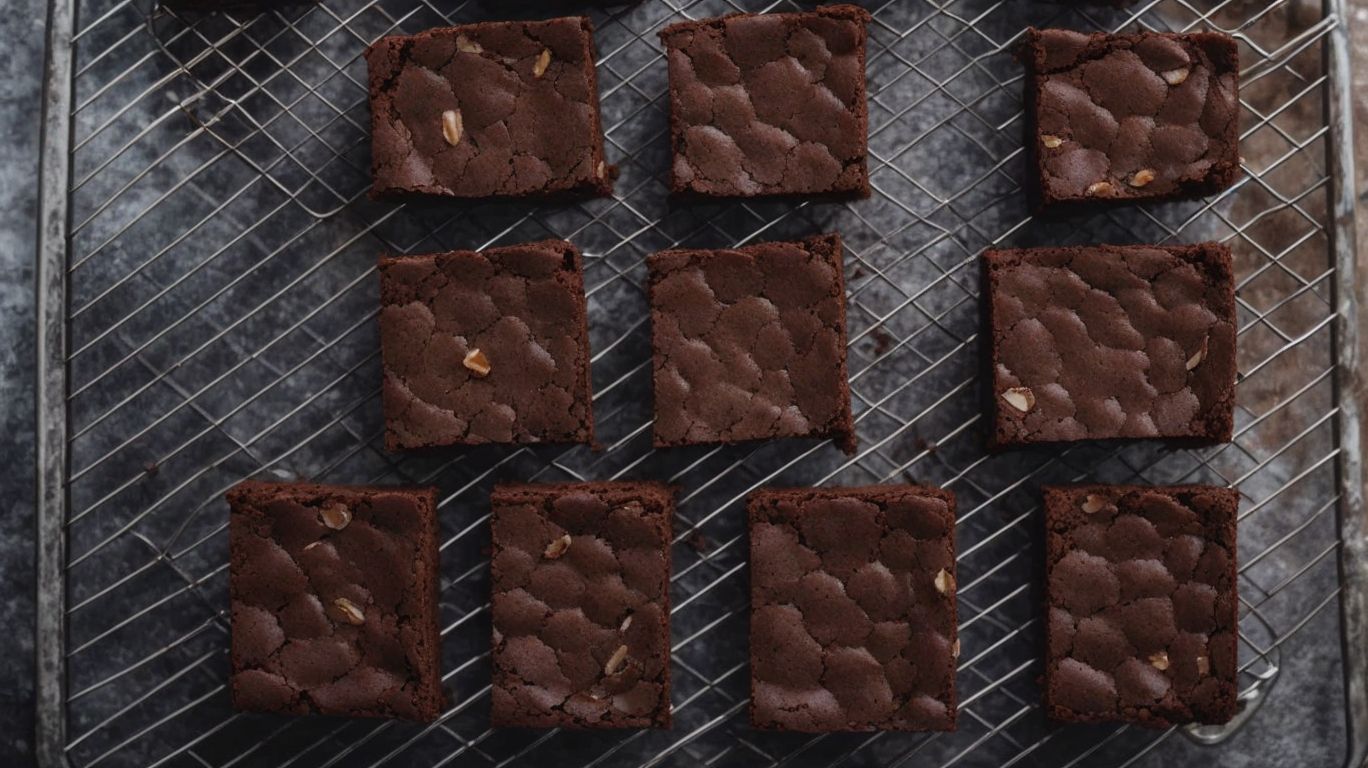
Credits: Poormet.Com – Gregory Campbell
Indulge in decadent eggless brownies that boast a rich chocolatey flavor and a moist, fudgy texture with this simple and delicious recipe.
These brownies are perfect for vegans or those with egg allergies, as they are made without any eggs but still turn out incredibly delicious. The key ingredients for this recipe include all-purpose flour, cocoa powder, sugar, baking powder, vegetable oil, vanilla extract, and non-dairy milk.
To start, preheat your oven and prepare a baking pan by lining it with parchment paper or greasing it lightly. In a mixing bowl, combine the dry ingredients of flour, cocoa powder, sugar, and baking powder.
- For a fudgier texture, use a lesser amount of flour and bake for a shorter time.
- If you prefer a cake-like texture, increase the amount of flour and bake for a longer duration.
Ingredients
Gather flour, cocoa powder, sugar, butter or plant-based oil, chocolate chips, vanilla extract, and your chosen egg substitute for this delectable eggless brownie recipe.
In terms of flour, opt for all-purpose or whole wheat for a wholesome twist. The cocoa powder should be unsweetened for that rich chocolatey flavor. Choose between granulated sugar or brown sugar depending on your taste preferences. Make a decision between using melted butter for a traditional taste or go for plant-based oils like coconut or avocado for a healthier version.
For the indulgent touch, don’t forget to add chocolate chips or chunks. The vanilla extract will enhance the overall flavor profile. As for the egg substitute, you can go with options such as applesauce, mashed bananas, yogurt, or even flaxseed or chia seed mixtures for that perfect moisture and binding aspect.
Instructions
Follow these simple steps to prepare and bake your eggless brownies to perfection, ensuring a delightful dessert experience for all.
First, gather your ingredients including flour, sugar, cocoa powder, baking powder, salt, vegetable oil, vanilla extract, and any add-ins like chocolate chips or nuts.
In a mixing bowl, whisk together the dry ingredients before slowly incorporating the wet ingredients, mixing until a smooth batter forms. Be careful not to overmix to avoid a tough texture.
Grease a baking dish with oil or butter, then pour the batter into it, spreading it evenly. Smooth the top using a spatula to create a uniform surface for baking.
Preheat your oven to the recommended temperature and bake the brownies for the specified time, remembering that the center should be slightly soft when done.
Allow the brownies to cool in the pan before cutting them into squares and serving them with a dusting of powdered sugar or a scoop of vanilla ice cream.
Tips for Baking the Perfect Eggless Brownies
Master the art of baking eggless brownies with these expert tips that focus on adjusting baking time, enhancing moisture, and using quality ingredients for irresistible results.
In terms of adjusting the baking time for eggless brownies, keep in mind that they may require a few extra minutes in the oven compared to traditional brownies as they can be more delicate. To enhance the moisture in your brownies, consider adding ingredients like applesauce, yogurt, or mashed bananas to keep them moist and fudgy.
Choosing high-quality ingredients is paramount for achieving the best flavor and texture in your eggless brownies. Opt for premium cocoa powder, good quality chocolate, and fresh ingredients to elevate the overall taste.
Adjusting Baking Time and Temperature
Achieve perfect eggless brownies by carefully monitoring and adjusting the baking time and temperature to ensure even cooking and ideal texture.
Timing is critical as underbaking may result in a gooey, underdone center, while overbaking can lead to a dry, crumbly texture.
By making precise adjustments, you can achieve that perfect balance of moist fudginess and a slightly crispy top.
Oven type and size can also play a crucial role, affecting the distribution of heat in the baking process.
For convection ovens, lower the temperature slightly or reduce baking time to prevent drying out. In smaller ovens, consider rotating the pan halfway through baking for even heat distribution.
Adding Extra Moisture
Enhance the moistness and richness of your eggless brownies by incorporating additional moisture sources such as fruit purees, plant-based milks, or yogurt.
Utilizing fruit purees, like applesauce or mashed bananas, not only introduces moisture but also adds natural sweetness and a hint of flavor to your brownies. Similarly, substituting traditional dairy with plant-based milks such as almond milk or coconut milk can enhance the creaminess and moisture content without compromising the texture.
Incorporating yogurt in your eggless brownie recipe can provide an added tanginess while keeping the brownies moist and decadent. These alternative moisture sources not only improve the texture but also contribute to the overall flavor profile of the brownies.
Using Quality Ingredients
Elevate the flavor and texture of your eggless brownies by selecting high-quality cocoa powder, chocolate chips, butter substitutes, and other premium ingredients.
In terms of cocoa powder, opt for a Dutch-processed variety for its deep, rich flavor and dark color. This will impart a more intense chocolate taste to your brownies. Using high-quality chocolate chips with a higher cocoa content can provide a luxurious, indulgent experience with every bite. For butter substitutes, consider options like coconut oil, avocado oil, or vegan butter to maintain the moistness and richness of the brownies. Lastly, vanilla extract should not be overlooked – choose a pure, high-quality version for a more profound aroma and flavor profile, enhancing the overall baking experience.
Conclusion
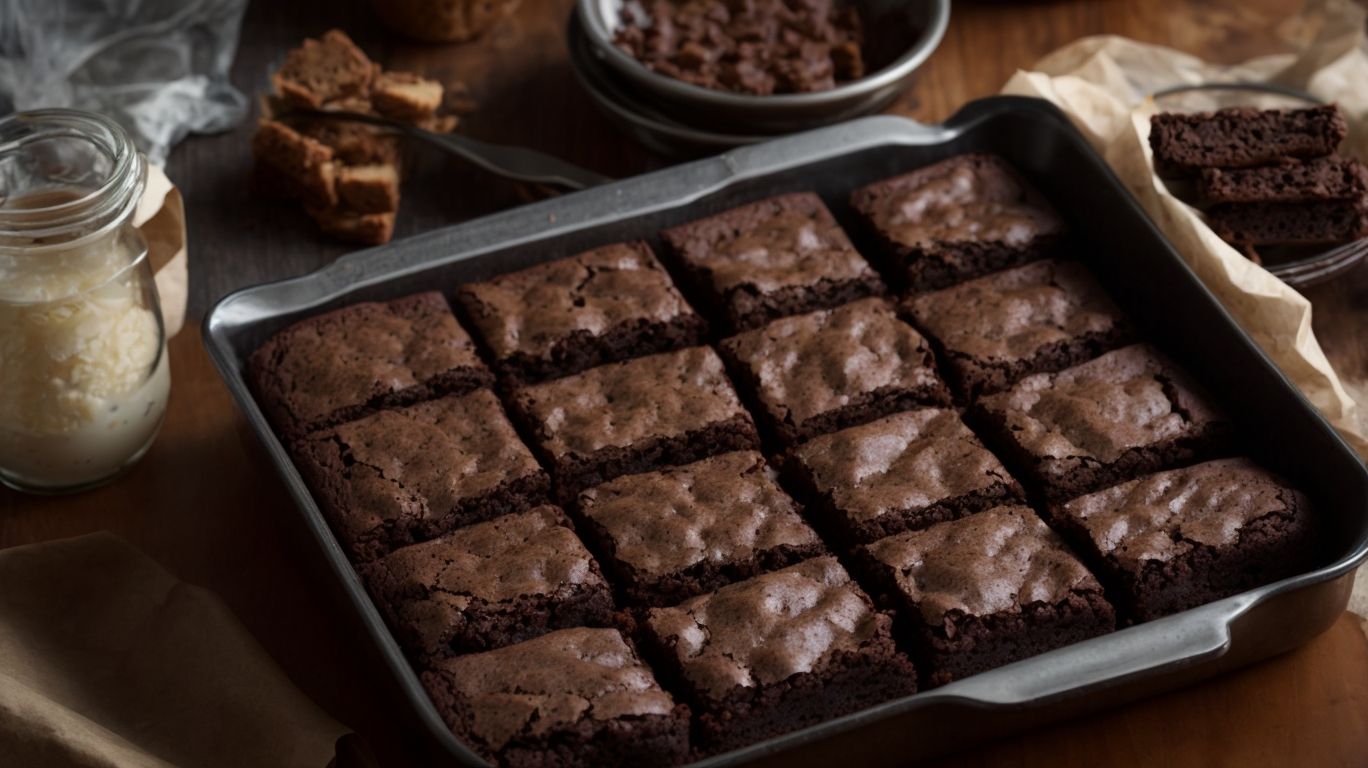
Credits: Poormet.Com – Jordan Hill
Baking eggless brownies opens up a world of possibilities for accommodating various dietary needs and preferences while still indulging in the rich flavors and textures of this beloved dessert.
Whether you follow a vegetarian or vegan diet, have allergies to eggs, or simply choose to avoid them, eggless brownies offer a scrumptious solution. By using substitutes like applesauce, bananas, or yogurt, these brownies turn out just as moist, fudgy, and decadent as their traditional counterparts. Eggless baking aligns well with the growing demand for plant-based and allergen-friendly options in today’s culinary scene, allowing bakers to cater to a wider audience without compromising on taste.
Frequently Asked Questions
How to Bake Brownies Without Eggs?
Baking brownies without eggs may seem like a daunting task, but with the right recipe and techniques, it’s absolutely doable. Here are some commonly asked questions about making egg-free brownies:
1. Can I use a substitute for eggs in my brownie recipe?
Yes, there are several substitutes that work well in brownie recipes. Some of the most common ones include mashed bananas, applesauce, flaxseed meal, and aquafaba (the liquid from canned chickpeas).
2. What ratio of substitute should I use for each egg in the recipe?
The ratio varies depending on the substitute you choose. For example, you can use 1/4 cup of mashed banana or applesauce for each egg, or 1 tablespoon of flaxseed meal mixed with 3 tablespoons of water. For aquafaba, use 3 tablespoons for each egg.
3. What is the best technique for incorporating the egg substitute into the batter?
This may vary depending on the recipe, but in general, it’s best to mix the egg substitute with the wet ingredients before adding it to the dry ingredients. This will ensure that it is evenly distributed throughout the batter.
4. Will using egg substitutes change the texture of my brownies?
Yes, the texture may be slightly different than traditional brownies made with eggs. However, with the right recipe and technique, you can still achieve a delicious and fudgy texture without eggs.
5. Are there any other ingredients I should add to make up for the lack of eggs?
Some recipes may call for additional ingredients to help bind the batter together and add moisture, such as vegetable oil, melted butter, or yogurt. These can also contribute to the texture and flavor of the brownies.
6. Can I use an egg replacer instead of a natural substitute?
Yes, there are many commercial egg replacers available that can work well in brownie recipes. Just be sure to follow the instructions on the package and adjust the amount according to the number of eggs called for in the recipe.

